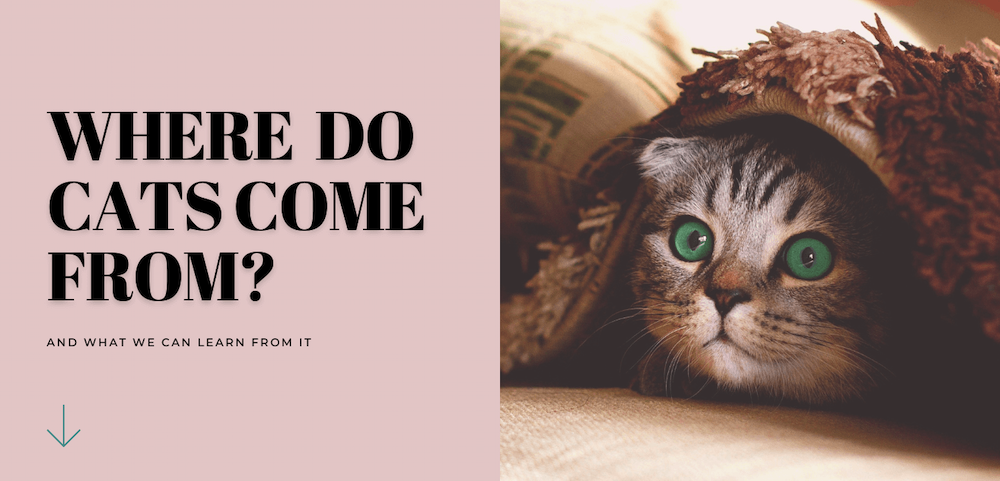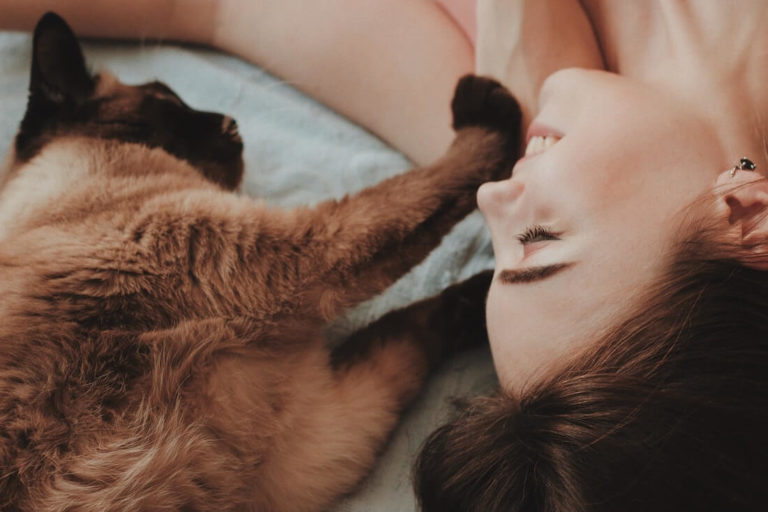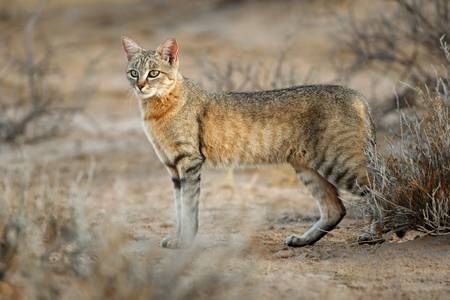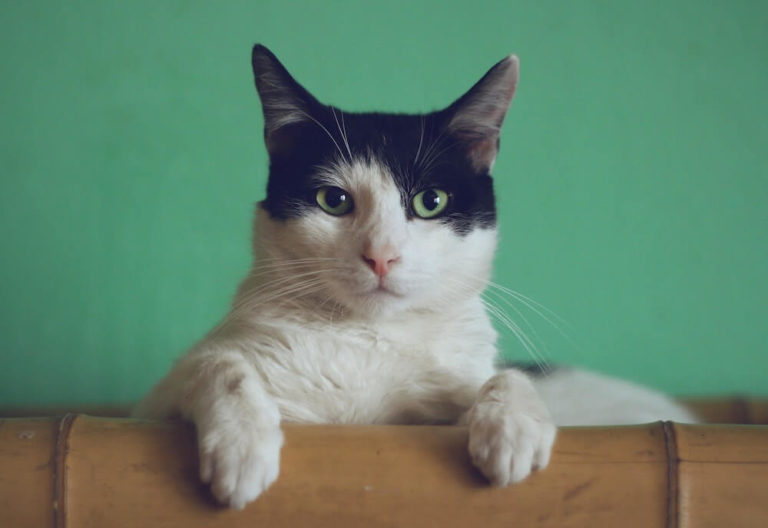
How Were Cats Domesticated?
Have you ever wondered where your cat comes from? Or what about ALL cats?
Where exactly did house cats come from?
You may have heard that dogs began being domesticated from wolves around 30,000 years ago, but what about our other furry friends?
Is there anything that we can learn from the history of cats and their heritage?
Well folks, get your detective hats out because it’s time to solve… THE MYSTERY OF CATS!

Although our cats may seem incredibly “wild” at times, they are actually domesticated.
🔎 Domestication is when an animal is “tamed” over many generations. This alters the animal’s DNA over time.
Domestication can take a long time, like thousands of years, and it’s a process that humans have come to know quite well.
Humans have domesticated dogs, cats, cows, sheep, donkeys, horses, goats, chickens—the list goes on!
So, how exactly were cats domesticated?
The oldest skeleton of a domestic cat that scientists have found (yet) was found on the island of Cyprus in the Mediterranean Sea. Scientists estimate that this cat lived around 9,500 years ago.
That would have been after humans began farming in the area (then known as the Fertile Crescent).
Also, by studying the DNA of cats, scientists found that all domestic cats alive today descend from the wildcat Felis silvestris (read more).

This lines up with scientists’ theory of cat domestication.
As humans began farming, they also started storing crops and grain! 🌾
This attracts rodents (like rats 🐀 and mice 🐁).
Since cats primarily hunt small rodents, cats started moving in towards villages that were farming, because these villages likely started started having some pest problems!
Eventually, cats and humans formed a commensal, mutually-beneficial relationship.
It’s really a win-win. The cats can score some yummy nom-noms while helping the village hoomans with their pest problem.
The humans likely noticed this and enjoyed the benefits the cats brought (and they’re also just so darn cute ❤️).
So the domestication process for cats is thought to have been much more “hands-off,” and likely did not start until long after humans were already domesticating dogs and other animals.

I think cats are given a hard time in today’s society by constantly being compared to dogs, consciously or unconsciously.
Dogs and cats are entirely different species (of course) and went through entirely different domestication processes.
Some of the differences between cat and dog domestication include:
👉 Dogs were already being domesticated by the time cats started being domesticated (for around 20,000 years already!)
👉 Dogs and humans worked closely together
👉 Dogs were bred for various specific purposes
Cats were not bred to serve specific purposes in the way that dogs were.
In fact, it’s often said that cats domesticated themselves.
Breeding cats for certain coat colors and patterns did not start until around the medieval period, long after cats had already started being domesticated.
Even then, cats were bred for specific physical characteristics, rather than specific behaviors or skills or to serve a specific purpose.
While cats are technically domesticated, we have not actively altered their genetic makeup as intensely or for as long as some other domesticated animals.
For example, for most of history house cats have been allowed to roam freely outside.
Litter and litter boxes did not even become readily available for people to buy in pet stores until around the 1940s!
So really you could say that cats wandered their way into our hearts (and our villages), and every hooman is forever better for it. ❤️